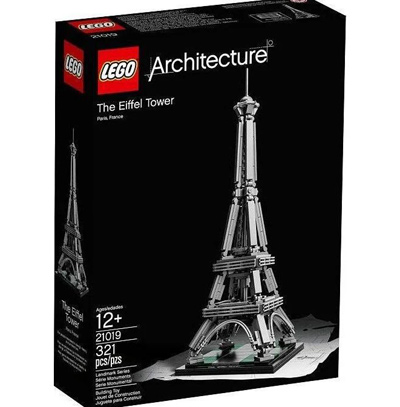Table of Contents
LEGO has long been a beloved medium for creativity, and its LEGO Architecture series takes that passion to a whole new level. Designed for enthusiasts of both construction and design, this series allows builders to recreate some of the world’s most iconic structures in intricate detail. Whether you’re a history buff, an aspiring architect, or simply a LEGO fan, LEGO Architecture offers an engaging way to appreciate architectural marvels from around the globe.
A Brief History of LEGO Architecture
The LEGO Architecture theme officially launched in 2008, but its roots go back much further. The concept was inspired by the works of Adam Reed Tucker, a Chicago-based architect who used LEGO bricks to construct detailed architectural models. Recognizing the potential of his work, LEGO partnered with Tucker to create a dedicated series that would blend construction play with real-world architectural design. Since then, the series has expanded to include numerous famous landmarks and cityscapes, capturing the imagination of builders worldwide.
The Art of Miniature Construction
Unlike traditional LEGO sets designed for play, LEGO Architecture sets focus on realism and aesthetic accuracy. Each set is carefully designed to replicate key architectural elements, using innovative building techniques and specialized bricks to capture the essence of a landmark. From the pointed spires of the Empire State Building to the sweeping curves of the Sydney Opera House, the LEGO Architecture series showcases a commitment to authenticity.
One of the most remarkable aspects of these sets is their ability to convey the grandeur of real-life structures at a much smaller scale. Using clever part usage—such as using grille tiles for window facades or hinge pieces for angled walls—LEGO designers ensure that each model retains the spirit of its inspiration.

Exploring the Iconic Sets
LEGO Architecture has covered a diverse range of buildings, from ancient wonders to modern skyscrapers. Some of the most popular sets include:
- The Empire State Building – A towering model that captures the Art Deco elegance of one of New York City’s most famous landmarks.
- The Eiffel Tower – A tribute to the iron lattice masterpiece that dominates the Paris skyline.
- The White House – A detailed replica of the iconic U.S. presidential residence, complete with neoclassical columns and symmetrical gardens.
- The Great Pyramid of Giza – A historical model that pays homage to one of the Seven Wonders of the Ancient World.
- The Tokyo Skyline – A vibrant cityscape featuring miniature versions of Tokyo Tower, Shibuya Crossing, and more.
Each of these sets offers an educational component, providing background information on the architectural significance of the structures they depict.
Why LEGO Architecture Stands Out
1. A Blend of Education and Fun
LEGO Architecture sets aren’t just about building—they’re about learning. Each set comes with a booklet containing fascinating insights into the history and design of the structure, making it an excellent tool for education. Aspiring architects and design students often use these sets to explore building techniques and architectural styles in a hands-on way.
2. Aesthetic Appeal
Unlike many LEGO sets aimed at younger audiences, LEGO Architecture sets are designed with display in mind. Their sleek, monochromatic color palettes and detailed recreations make them perfect for showcasing in homes or offices. Many adult collectors appreciate the sophisticated look of these models as elegant décor pieces.
3. Innovative Building Techniques
Many LEGO Architecture sets introduce advanced building methods, challenging even experienced builders. For example, the Fallingwater set (based on Frank Lloyd Wright’s masterpiece) uses stacked plates to replicate the famous cantilevered design. This encourages builders to think critically about how structures are assembled, reinforcing principles of real-world architecture.
4. Inspiration for Future Architects
LEGO Architecture has become a gateway for young builders interested in architectural design. By constructing detailed models, builders develop an appreciation for scale, proportion, and structural integrity—skills that are valuable in the fields of engineering and design.
Looking Ahead: The Future of LEGO Architecture
As the LEGO Architecture series continues to grow, fans eagerly anticipate new additions to the lineup. With the potential for more historical sites, futuristic skyscrapers, and famous bridges, the possibilities are endless. Additionally, advancements in LEGO brick technology may allow for even more intricate and detailed designs, pushing the boundaries of what can be achieved at a small scale.
Final Thoughts
LEGO Architecture is more than just a set of building blocks; it’s an artistic expression of the world’s greatest structures. Whether you’re constructing the skyline of your favorite city or recreating a historical wonder, these sets offer a rewarding and educational experience. As LEGO continues to innovate and expand this line, it remains a testament to the endless possibilities of imagination and design.
